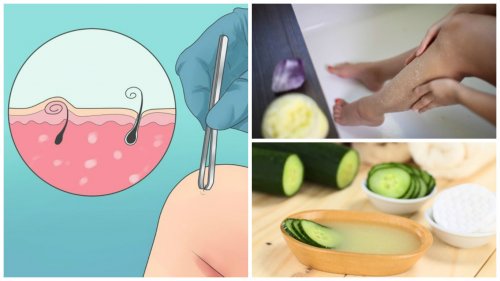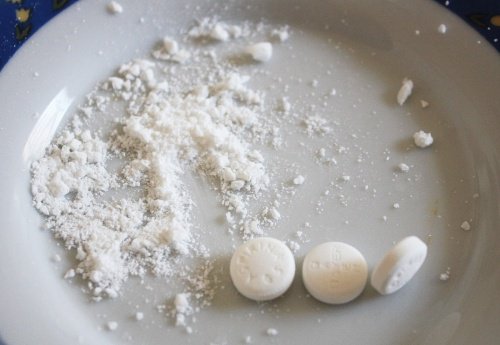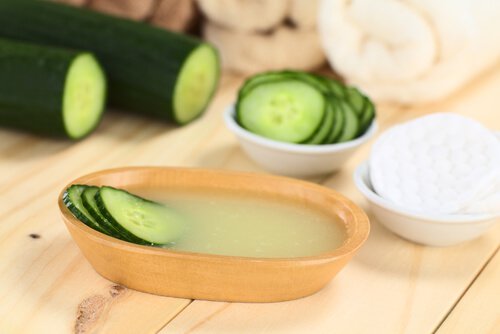5 Natural Remedies that May Help You Get Rid of Ingrown Hairs

Ingrown hairs are one of the most common and bothersome beauty problems. They usually happen on the legs, underarms, or other areas where people shave or use other hair removal methods.
It’s common in people who have curly or coarse hair. However, most people will come across this problem at least once.
What happens is that hairs grow below the skin and has trouble breaking through the surface of your skin.
It almost always happens after shaving, because the razor cuts the upper part of the follicle and it gets partially blocked with dead skin cells. It also happens when the hair curls and grows the wrong way, staying below the skin or in the follicle.
Whatever the case, it’s an uncomfortable situation. It doesn’t just affect your appearance but also because the bumps can be rather painful.
Fortunately, there are several home remedies that may help you fix the problem with natural ingredients to relieve inflammation and help extract the hairs.
Below, we’ll share 5 of the best remedies you can use the next time this happens to you.
1. Chamomile tea

Chamomile is a plant with anti-inflammatory and soothing properties that can be very useful in treating ingrown hairs.
Applying it directly to the skin may help shrink the bumps that form on the surface while helping open your pores so the hair can break the surface.
Read this, too: Excessive Hair: Why Does It Appear and How to Eliminate It?
Ingredients
- 2 tablespoons of chamomile flowers (20 g)
- 1/2 cup of water (125 ml)
What do I do?
- Add the two tablespoons of chamomile to the boiling water and let it sit for 5 to 10 minutes.
- Once it cools to a bearable temperature, moisten a clean cloth and apply to the affected area.
- Repeat two or three times a day.
2. Honey
Honey is a natural antibiotic. When applied topically, it may help lower inflammation and the risk of infection. Using it several times a day may speed up healing and also moisturize your skin.
Ingredients
- 2 tablespoons of honey (50 g)
- 6 drops of lemon juice
What do I do?
- Mix the honey with the lemon juice and then gently massage it into the affected area.
- Let dry for 10 minutes and then rinse.
- Apply two or three times a day for as long as necessary.
3. Aspirin

In addition, due to its high salicylic acid contents, it may help remove the dead skin cells that are blocking the follicle.
Ingredients
- 2 aspirin tablets
- 1 tablespoon of hot water (10 ml)
- 1 teaspoon of honey (7.5 g)
What do I do?
- Grind the aspirin and moisten the powder with the hot water and teaspoon of honey.
- Once you get a paste, smooth with gentle massaging motions into the affected area.
- Leave on for 10 minutes and then rinse.
- Repeat every day as necessary.
4. Salt
Table salt is an excellent exfoliating agent that may help remove dead skin cells and unblock your pores.
Massaging it into your skin may help improve the circulation in the affected area, helping with its healing and reducing the inflammation.
Ingredients
- 1 tablespoon of coarse salt (12 g)
- 1 teaspoon of rosewater (5 ml)
What do I do?
- Moisten the coarse salt with the rosewater and smooth onto the irritated skin.
- Leave on for a few minutes then rinse.
- Use twice a day.
Check this article out: Top 5 Natural Ingredients for Healthy Hair, Skin and Nails
5. Cucumbers may also help you get rid of ingrown hairs

The hydrating and anti-inflammatory properties of cucumber may help you get rid of your ingrown hairs. It contains vitamin C, water, and antioxidants that may help reduce irritation and remove dead skin cells.
Ingredients
- 1/2 cucumber
- 1/4 cup of milk (62 ml)
What do I do?
- Blend the cucumber with the quarter cup of milk. Once well mixed, refrigerate for two hours.
- Once chilled, apply the mixture to the ingrown hairs and let sit for 20 minutes.
- Rinse and repeat twice a day.
Try to stick to one remedy and apply it several times or until you see improvement. If the ingrown hair remains, you should see a doctor to avoid complications.
Main image courtesy of wikiHow.com.
This text is provided for informational purposes only and does not replace consultation with a professional. If in doubt, consult your specialist.








